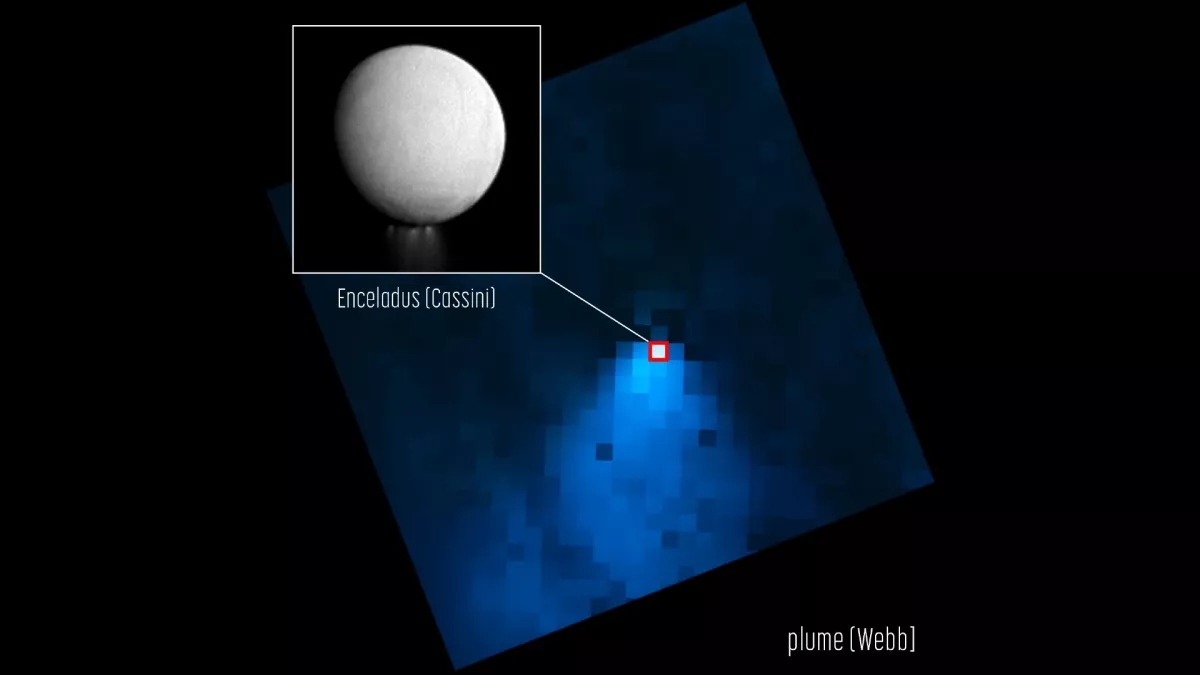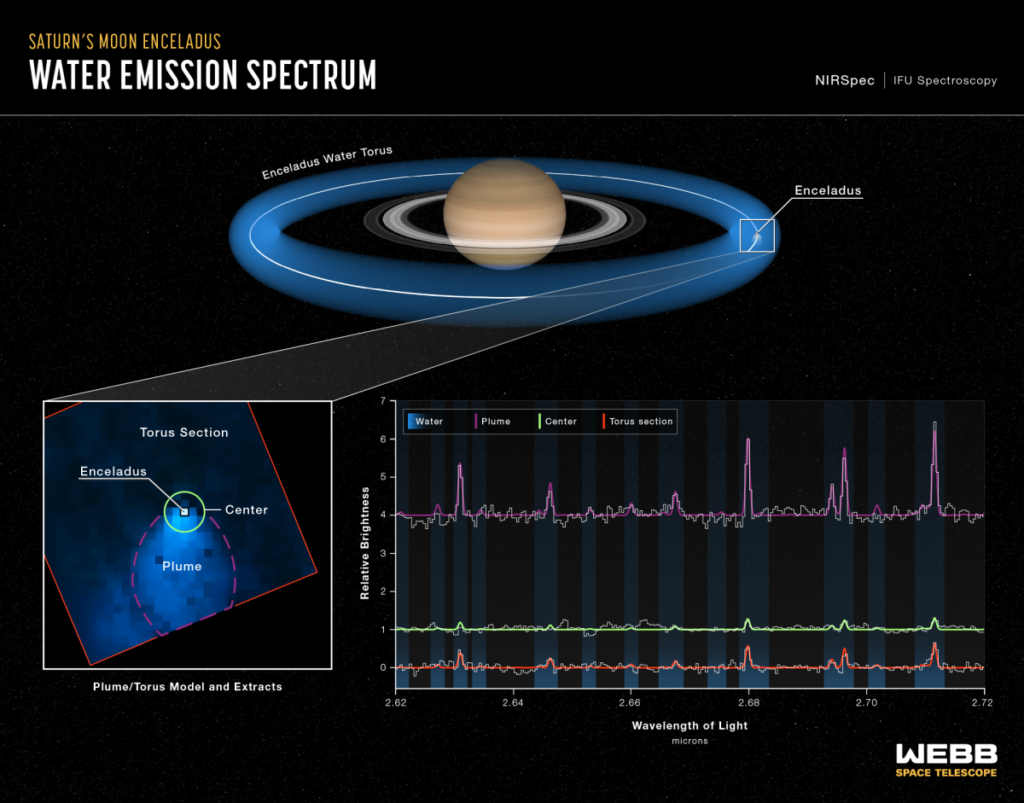
Enceladus is one of the most fascinating moons of Saturn. It is a small, icy world that harbors a global ocean of liquid water beneath its surface.
This ocean is heated by tidal forces and vents through cracks at the south pole, creating spectacular water vapor and ice particle geysers. These geysers form a huge plume that extends more than 6,000 miles (10,000 kilometers) into space, making Enceladus one of the most active bodies in the solar system.
The James Webb Space Telescope (JWST) has recently observed this plume with unprecedented detail and sensitivity. Using its Near-Infrared Spectrograph (NIRSpec), JWST could map the plume over a large area and measure its composition. The results were surprising and exciting: the plume is 20 times larger than the moon itself, and it contains water and organic molecules that could be building blocks for life.
The plume of Enceladus is also a major water source for the Saturnian system. JWST detected that about 70% of the water vapor escapes the plume and spreads over Saturn’s rings and other moons. This water could provide a habitable environment for other potential life forms.
Enceladus is a prime target for future exploration, as it offers a unique opportunity to study a habitable ocean world in our own backyard. JWST will continue to monitor the plume and look for signs of biological activity.
The next step would be to send a spacecraft to sample the plume directly and analyze its contents. Such a mission could answer one of the biggest questions in science: are we alone in the universe?


